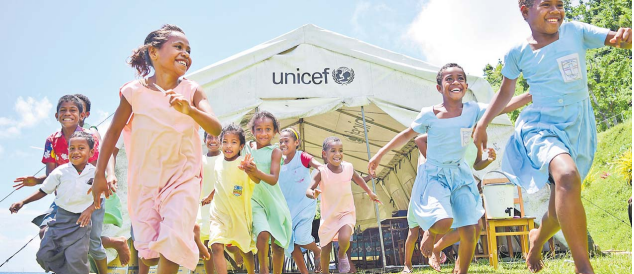THE People’s Coalition Government’s 2023-2024 National Budget, with the theme “Rebuilding our future together,” marked a fresh start for the country after the challenges of the pandemic and a change in leadership.
In comparison, the 2024-2025 Budget takes a new direction with the theme “An economically stable, secure and sustainable Fiji”, with a stronger focus on long-term economic stability and making the country’s infrastructure more resilient.
Looking at the funding given to each ministry in both budgets helps show how the Government’s priorities are changing and what this means for Fiji’s future social and economic development.
1. Ministry of Education
In 2023-2024, the Ministry of Education received about $100.3million in total funding, covering both operating and capital expenditures. This rose by 5 per cent to $105.4m in the 2024-2025 financial year. The increase reflected the Coalition Government’s sustained commitment to improving education infrastructure and support systems. Investments were made in school rehabilitation, technical and vocational training, and enhanced grants for early childhood education.
2. Ministry of Health and Medical Services
From $110.7m in the previous financial year, the ministry’s budget allocation increased by 5.3 per cent to $116.5m in 2024-2025. This increase supports increased demand for healthcare access, personnel training, and rural health centre upgrades. The funding also reflects the government’s prioritisation of building resilient health systems to address NCDs, public health emergencies and infrastructure modernisation.
3. Ministry of iTaukei Affairs
There was a significant drop in the Ministry of iTaukei Affairs’ budget, which declined from $23.3m in 2023-2024 to just $13.1m in the new financial year, a 44 per cent reduction. This major cut likely shows the government is trying to simplify its projects and reduce admin costs. But it also raises questions about how it plans to balance helping everyone with saving money.
4. Ministry of Finance
The Ministry of Finance saw a 6.4 per cent increase in its allocation, from $61.7m to $65.7m. This modest boost aligns with the operationalisation of reforms in public finance management, including the implementation of the new budget system and enhanced tax collection mechanisms. It reflects the ministry’s expanded role in debt management, digital systems, and expenditure oversight.
5. Ministry of Rural and Maritime Development and Disaster Management
Budget support for this ministry increased from $58.1 million to $61.3m. The additional funds support critical projects including rural water supply, infrastructure rehabilitation in cyclone-affected areas, and maritime transportation. With climate change risks persisting, the government has bolstered this ministry’s role in localised disaster preparedness and community development.
6. Ministry of Public Works, Meteorological Services and Transport
Increasing from $74.9m to $80.5m, this ministry’s budget growth indicates a strong government commitment to transport connectivity and infrastructure modernisation. The additional $5.6m will fund road repairs, bridge construction, and climate-proofing of key assets, aligning with national priorities of building resilience and improving access.
7. Fiji Police Force
The Police Force was allocated $37.5m in 2023-2024, which increased to $41.4m in the latest budget. This 10.4 per cent rise supports the theme of a more secure Fiji. Funding is focused on improving operational readiness, strengthening border security, upgrading police posts, and supporting community policing initiatives.
8. Republic of Fiji Military Forces
From $30.5m in the previous year, the RFMF allocation increased to $34.5m. While the growth rate is lower than the Police Force, the continued investment in logistics and infrastructure shows the Government’s emphasis on national security and regional peacekeeping roles.
9. Ministry of Women, Children and Social Protection
This ministry, one of the highest funded, saw a small drop in its budget from $172.4m to $159.2m. The decrease comes even as more women, elderly people, and children face hardship. It may be because of efforts to improve how the system works, combine social protection records, and move some people off welfare support. Still, the large amount of funding shows the Government is still committed to helping those in need.
10. Ministry of Agriculture and Waterways
Funding rose from $57.8m to $61.7m, in line with the push for sustainable food systems and rural resilience. Investments are directed toward farm access roads, seed development, mechanisation, and irrigation projects.
Debt and deficit context
The Government’s budget deficit dropped slightly from $639.1m in 2023-2024 to $635.5m in 2024-2025. Even though overall spending remains above $4.5billion, the Government is sticking to its goal of keeping the deficit below 5 per cent of GDP — down from 4.8 per cent last year to 4.5 per cent this year.
Debt repayments have also gone down significantly, from $516.2m to $349.1m, thanks in part to better loan refinancing deals and a tighter financial strategy.
A closer look at ministry allocations shows that while the Coalition Government is putting more money into key areas like education, health, and security, it is also cutting costs in other places where possible. Ministries responsible for vital services, such as the Public Works and Disaster Management, have received more funding, in line with this year’s theme of economic stability and resilience.
However, a sharp drop in funding for the Ministry of iTaukei Affairs raises questions about fairness and representation. As Fiji continues to recover and reform, how the money is shared across ministries will be crucial in shaping the future of all Fijians.



